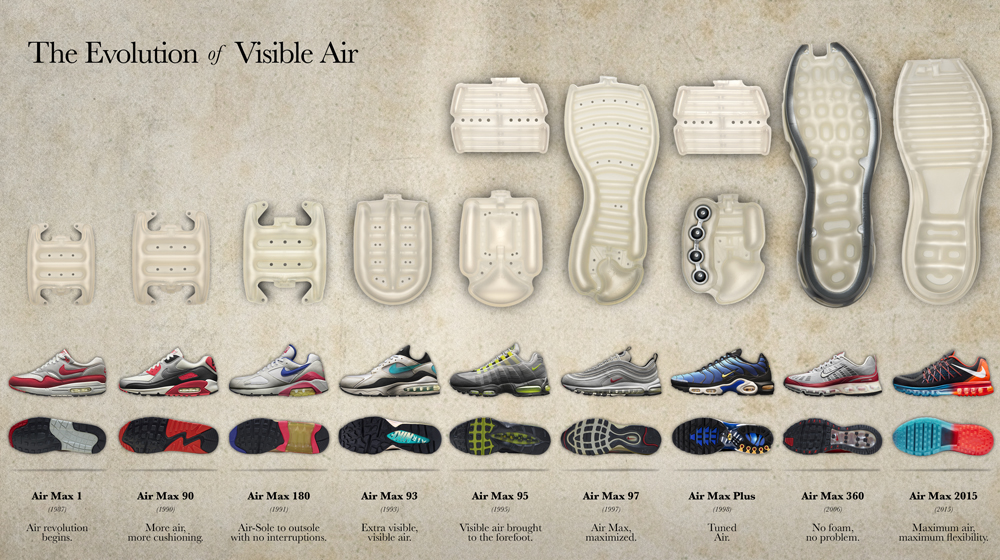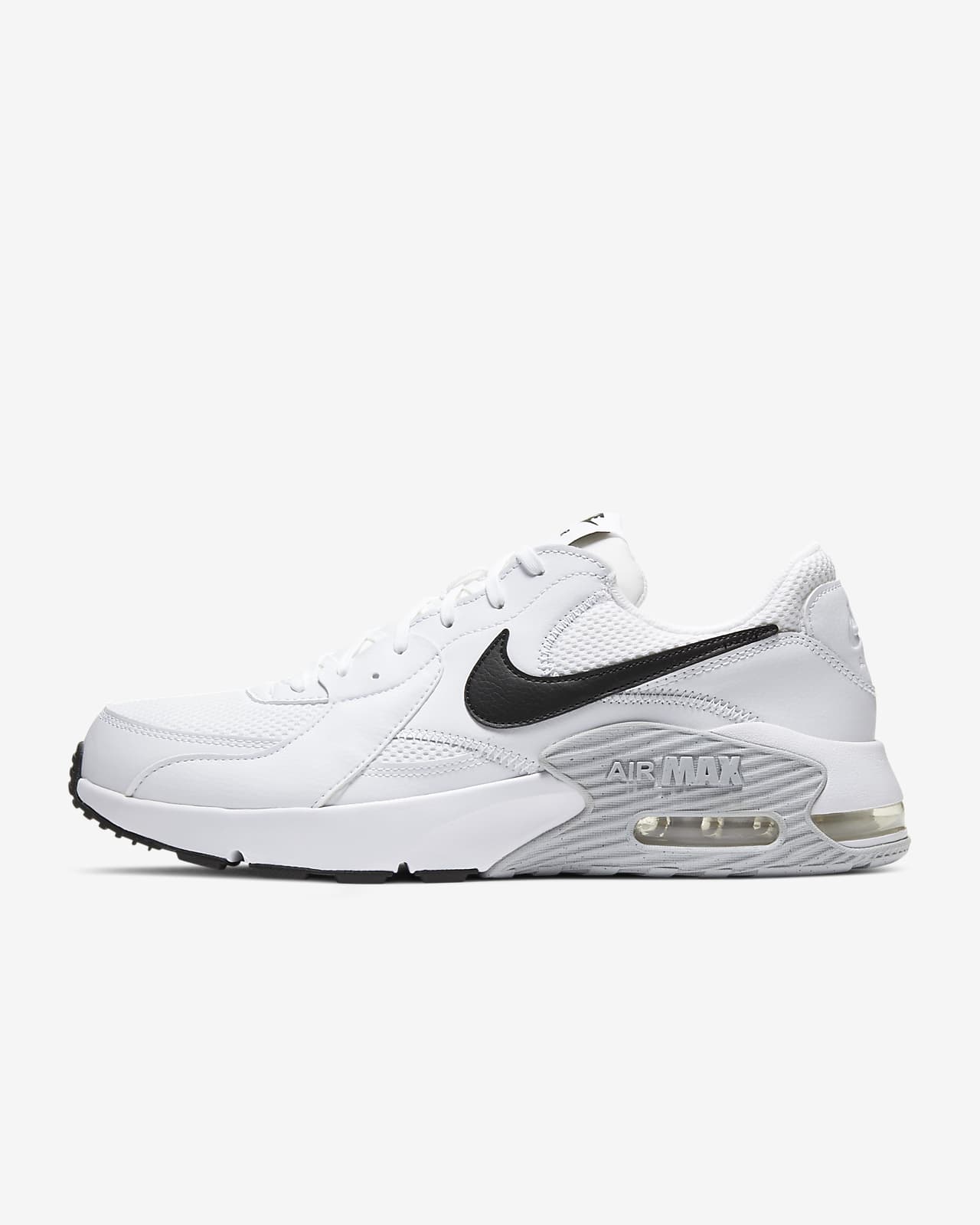Who Created Nike Air Units (and Why Are They Awesome?)
Nike’s airbag technology has been helping runners for years, but who created Nike air units? Click here to learn about the Air Max and Jordan’s innovative tech.
Nike, in the year 2019, made a revenue of $39.1 billion. With over 20 different models, Nike is one of the leading shoe companies in the entire world.
But Nike was not always this profitable. Back in the 1960s, the company was selling shoes from the back of a trunk!
The turning point was in the early 1970s when a man named Marion Franklin Rudy came to Nike with a revolutionary idea. And with this idea, Nike Air was created. But who created Nike Air units? And most importantly, why are they so special?
Who Created Nike Air Units?

Before talking about the Nike Air unit creator, we should first talk about the man whose innovative idea brought Nike into the worldwide spotlight. With this idea, Nike has stood different from the other shoe-making companies for more than 30 years.
Marion Franklin Rudy & The Tailwind

An ex-aeronautical engineer, Marion left NASA to pursue a more creative route in his career. Shortly afterward, he thought of something that would shake the foundation of shoe-making companies: placing sacs of air in shoes’ soles to soften the impact. After preparing a shoe prototype, Marion went to 30 different companies, and all of them rejected the prototype except one, Nike.
Phil Knight (Nike’s Co-founder) took the shoe prototype and tested it out, and the results were surprising. While running, Phil felt that his running was smoother, thanks to the air packs found in the shoe’s sole. Then in 1978, Nike released its first air-cushioned shoes called Tailwind.
Shoemakers at Nike’s first Research & Development lab in New Hampshire developed about 250 pairs of Tailwind and then sent these to Hawaii shoe stores for the Honolulu Marathon. To Nike’s surprise, the shoes sold out within 24 hours, despite an unprecedented $50 ($199.60 in today’s economy).
In the year 1978, researchers at the University of Tennessee in Knoxville asked ten runners to run with Nike Tailwinds on a treadmill. After several tests, they found that the runners used less energy while using Tailwind than in conventional running shoes.
It would not be until the 80s when Nike would create its most famous shoe line: the Nike Air. But before Nike Air came to life, a man named Tinker Hatfield had to come into the scene.
The Man Behind The Iconic Air Design

Tinker Hatfield was not a shoe designer at first, but rather an architect by trade. He designed office buildings on the Nike campus, apparel showrooms, and retail stores throughout the country. But one day, he thought he could bring something new to the world in terms of design, especially compared to the aesthetically bland shoes that were out at that time.
So in 1984, Nike allowed him to design Nike Air for Michael Jordan. By doing so, he made a whole new shoe design, all of course, while utilizing air technology. Hatfield then designed the iconic Air Jordans that swept the world.
Nike Air Jordan

Released publicly in 1985, the Air Jordans redesigned what people expected of shoes—bringing a more street look into the sports world. Unlike most basketball shoes of the time, Air Jordans were made of leather. Its individual pieces allowed for unique color schemes, something typically only running shoes provided at the time.
They used the same air cushion the Tailwinds had and gave Michael Jordan an extra edge when playing a basketball match. That same year the NBA banned Nike Air Jordan from being used, but that did not stop Michael Jordan from using them.
However, by the year 1987, sales were not as profitable as before, meaning that Nike had to step up their game once again. And who would they call to change the sneaker business again? Tinker Hatfield.
Nike Air Max

People wanted something even more different and groundbreaking than the Nike Air Jordan. And even though the air cushion technology was being implemented in the Nike Air lineup, no one had seen the technology in the shoe. And that is when Hatfield came up with the idea of making visible the air cushions.
Together with Marion, Tinker designed a window to the sole of the shoe. Their goal was to display the innovative air technology to the whole world. Tinker had connected engineering into the world of shoe design, and Nike Air Max was born.
This required a redesign for the current air cushions used in the Tailwind and Jordans. Marion made the cushions larger and better suited for higher impact. At the same time, Hatfield made a simple design that could be recolored easily so that the Air Max line could be released in several colors.
And to this day, there have been 20 different versions of Nike Air Max. All of these models were made with the iconic air cushions that made Nike Air Max so special. That has not stopped Nike from designing another iconic Nike Air design, the Nike Air Yeezy.
Nike Air Yeezy

Despite not being designed by Hatfield, the Nike Air Yeezy embraces the original design of the Air Max while adding a more modern look. With the collaboration of Kayne West, Yeezy’s design was what they called a modern classic. Reflecting on the details of Nike’s origins and altering them with the innovative Nike way to deliver a unique shoe.
They made two different models for the Yeezy and had planned for a third. Unfortunately, due to creative differences, Kayne left Nike and joined Adidas.
Nike Air Today

By knowing who created Nike Air units, you can understand why they shaped the world of shoes. And thanks to Tinker Hatfield, shoes have become a phenomenon to the extent that some only live to collect Nike Air.
So if Nike is what you like, check out our selection of Air Jordans, Air Max, and Air Yeezys. We are sure you will find the models you’re looking for.